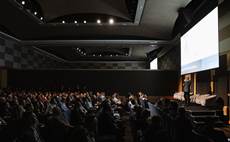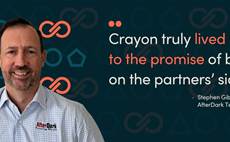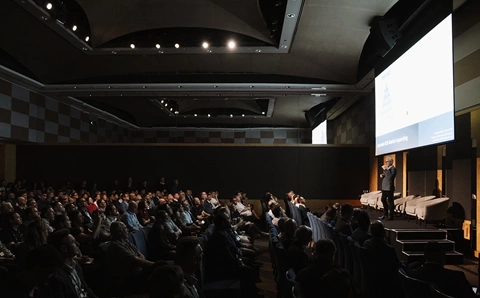Prestigious private school Matthew Flinders Anglican College turned to Apple partner Secure Access to deploy devices for its students, spanning a total of 117 iPad Air 2s, 554 MacBook Airs and 50 MacBook Pros. We caught up with the reseller’s managing director, Jason Garland, education business development manager Corrie Orpin and Patrick Verhoeven, technology manager of Matthew Flinders.
How did the project start?
Corrie Orpin: We’ve been working with Matthew Flinders for the last four years. We’ve been doing their back end infrastructure, their servers and their networking switches and looking after their vendor management. They put out a tender for their fleet and we were the successful applicant.
How long have you been an Apple supplier?
Corrie: We’ve been trading for 14 years now, and brought on Apple in the last four-and-a-half years. We are one of only a select few on the Sunshine Coast that are Apple Consultants Network. You need to be ACN to deal in education.
What Apple products do you supply to schools?
Corrie: iPads are normally for primary and you’ll find secondary is when you go up into the MacBook Airs. We also do mobile device management (MDM). But not with this school, because they have a large IT department so they look after their own mobile device management.
For this rollout, we did the procurement, the organisation, we had to then unpack them, we had to do asset tagging, we had to put all the covering on, inventory, did all the accessories – basically get them all ready in pre-marketed bags for the students for enrolment day. We did the same thing with the iPads. So it was basically all ready so they could easily either image them out or they were set up for the students to go.
What kind of IT team does Matthew Flinders have?
Patrick Verhoeven: We have three system administrators who look after the networks, servers, the data integration, security and client services. They have a team of help desk support in tier 1 and 2 that enable the front-end services and the clients to receive that face-to-face support. It includes a loan pool, in-classroom visits, individual fault-finding, and group workshops.
What led you to buy Apple devices from Secure Access?
Patrick: The college is keen to have an outstanding one-to-one laptop program for students. We feel it’s important to deliver the best product in a timely, economical way.
In designing the architecture behind the project, which includes infrastructure and the actual end-point devices, we had a look at what would be most cost-effective from a total cost of ownership perspective, appealing to end users and easy to maintain in large quantities. The Apple products fill that position in the market very well.
We also felt that if we were to outsource elements of the procurement then we could focus on our core skills and we wouldn’t have to be distracted by those sometimes protracted exercises in chasing down multiple vendors, because the laptop program includes peripherals as well as the core product.
And for the younger students?
Patrick: For lower primary, we have a two-to-one iPad program – one device to two children. We have a one-to-one in Year 5 through to Year 12. We allow MacBook Pros as a standard entry machine.
What technology were you running before this rollout?
Patrick: We had Dell laptops. We tried a number of different formats. We also had Fujitsu tablet PCs. There was a trend to work with those, mainly with the teachers, who were exploring the idea of a tablet. The students had the Dells, which were just a standard laptop.
What were the first Apple models you started with?
Patrick: In 2010, when the DER [Digital Education Revolution program] was launched, we went with plastic, white MacBooks, and they worked really well. Then we decided that we needed some more oomph, so we then went to the MacBook Pro. We made sure the teachers and the students had the same devices. We thought that was important. There was an equality there and an equity issue. Students felt valued.
When was that?
Patrick: It would have been 2011. We’ve maintained that fleet until this year where we’ve split it. The technology image, which requires Bootcamp, is more suitable for the MacBook Pro and we upped the RAM to enable better performance.
Then we made the MacBook Air the standard ‘vanilla’ SOE for most students. They’re all 13-inch devices, which is a nice point of access.
Was it a full refresh for all students?
Patrick: We have two cycles in our rollover. Every year we do half the school. We’ve chosen a two-year cycle because it maintains the resale values so it reduces the total cost of ownership on those products; again, it makes the child feel like they’ve got something special; and the staff and the students are up to date with the latest technologies.
Next: Infrastructure behind the scenes
Was everyone happy with the switch to Apple?
Patrick: The types of enquiries that I had four years ago and the type of enquiry I get now are very different. It was previously ‘Why not Windows?’ and now it’s ‘We can see the benefit of the decision you made four years ago.’
There’s still the enquiry about ‘Why not Windows?’ because there are some die-hards, but the reality is that the peripherals are becoming more important for the new styles of learning, where you are needing to attach robotics and attach peripherals like 3D printers. [There are more] developers for the Windows platform than for the Mac, especially iPads. One of the reasons we didn’t extend iPads into the middle school was because of that potential.
What can you tell us about the infrastructure behind the scenes?
Patrick: Since the beginning of the one-to-one program, we have heavily engaged in virtualisation technologies. That has given us the ability to take on more enterprise equipment in a far more efficient way. It’s allowed us to be more confident that our business continuity and disaster recovery processes can be implemented and tested in a streamlined and simplified way that allows us to do it more frequently or on demand.
We also have full redundancy. We have two server rooms on campus with about a 150-metre separation, so we have that level of diversity and of redundancy. We have two complete redundant SAN virtualisation infrastructures with UPS, air-conditioned, fibred – bells and whistles.
How is the broadband in this area?
Patrick: We were lucky enough to be part of the Connecting the Coast initiative because our fibre runs past our door through to Sunshine Coast University, so we were given the opportunity to tap into that back in 2010. We were one of the first to receive fibre on the coast.
How did the ‘Laptops for Schools’ program impact you?
Patrick: The DER was a government program for certain age groups and they were given a subsidy. Parents paid some and the government contributed funds. Those funds could be used for infrastructure or for devices. We took some for infrastructure to bolster our existing wireless and we used the bulk for devices. We staged that over the lifetime of that program.
Did you consider a ‘Bring Your Own Device’ (BYOD) approach?
Patrick: When the DER came to an end, we researched the best way forward in terms of maintaining our own fleet, whether to use the fee structure to provide a fleet of standardised machines, or to offer a bring-your-own solution, which was a very popular financial model that many schools adopted.
In our investigations and our observations of other schools that undertook a bring-your-own solution, it was really hit and miss. There were some classic disasters and some reasonable successes.
We felt that we were positioned perfectly to maintain a standardised fleet, have a quality of product and ensure that every student had that equity covered, so we had no compelling reason to change the model.
Corrie, what are you seeing across other schools in terms of BYOD?
Corrie: I have seen several schools go down the BYOD path, more state schools, obviously. In private education, most schools have stuck with the one-to-one programs.
Some schools have a full IT team and other small schools and Catholic schools might have a part-time IT person, so we go in there, set up the infrastructure for a one-to-one program and also help them with the MDM solutions. Some schools put the devices in the parents’ hands straight away. With other schools, we recommend that there is a MDM system in place.
There is still definitely Windows in some schools in Brisbane that we deal with and on the Coast. Most of the Windows fleets I have seen aren’t touchscreen. They are the base model, a little 11-inch. We have also had a school that bought Chromebooks on the Coast.
Did Matthew Flinders consider Chromebooks?
Patrick: We continue to test and research the best for our students. If that is the Chromebook, then we may end up with that particular solution. We’re not there now.
Next: how to deal with rough treatment of kids' devices
How do you cope with school children being a bit rough on their devices?
Patrick: Part of the whole education experience is looking after your equipment. We have a mechanism of infringements on one hand and incentives on the other hand to help them realise that taking care of the machine is in their best interest.
Being an Apple product means that there’s a certain bling attached to it. Some students take pride in their devices and will protect them at all costs. But you’ll always have mischievous students, so we get a fair amount of accidental damage, but we’ve got relationships with local providers to turn those devices round, plus a loan pool.
We are very keen to maintain a loan pool so a student is never without a device. That is our policy. A student will always be able to walk down to our help desk and trade a broken machine for a working machine on the spot.
With loan devices, is it easy to spin up the standard operating environment (SOE) for individual students?
Patrick: We have a number of flavours [of SOE]. We have the ‘vanilla’, which is the generic SOE, and we have technology which is split into graphics, IPT, music and business. We have other small variations of this.
Jason, what was it like rolling out 700 Apple devices?
Jason: This rollout went exceptionally well. I don’t think there were any hiccups, major delays or concerns. In fact, I’m hard-pressed to think of anything that was delayed. We had everything timed so that we knew the exact day the devices would turn up, which filled a very large classroom with a lot of pallets very quickly.
Who did you buy the devices from?
Jason: Avnet.
Any comments on working with Avnet?
Jason: They were brilliant.
Corrie: They were wonderful. Very professional, very quick.
Jason: When we put in a request to them with all the bits and pieces, they were willing to help with everything exceptionally quickly.
Patrick, what do you look for from a supplier relationship?
Patrick: We make no apologies for the fact that we seek competition as a first and foremost rule. It must be competitive, providing the best product at the best price, therefore we don’t have preferred suppliers.
We go to market and give everyone the same opportunity. We have experience with a number of providers including Secure Access that we’re very happy to work with. In light of our concept of diversity and redundancy, we also utilise other companies that can provide equivalent services to Secure Access.
Corrie: The relationship has been ongoing for four years.
Patrick: It’s taken a long time to develop the level of trust that we’re now put into and enjoy with Secure Access. The rollout was excellent.
It surpassed our expectations.
THE CUSTOMER
Matthew Flinders Anglican College
Established 1990
Students 1,300
Based Buderim, Sunshine Coast, Queensland
Industry sector Private education, from prep to Year 12
THE SUPPLIER
Secure Access
Established 1999
Headcount 14
Managing director Jason Garland
Location Maroochydore, Queensland
Specialties Microsoft Gold partner, Apple Consultants Network
THE PROJECT
Situation Apple device rollout
Technology deployed 117 iPad Air 2s, 554 13-inch MacBook Airs and 50 MacBook Pros, including installation and accessories
Value Over $1 million
Outcome Students provided with quality devices, with iPads for younger students, MacBook Airs for older students and MacBook Pros for certain students.




_(11).jpg&h=142&w=230&c=1&s=1)







.jpg&w=100&c=1&s=0)
_(8).jpg&w=100&c=1&s=0)









